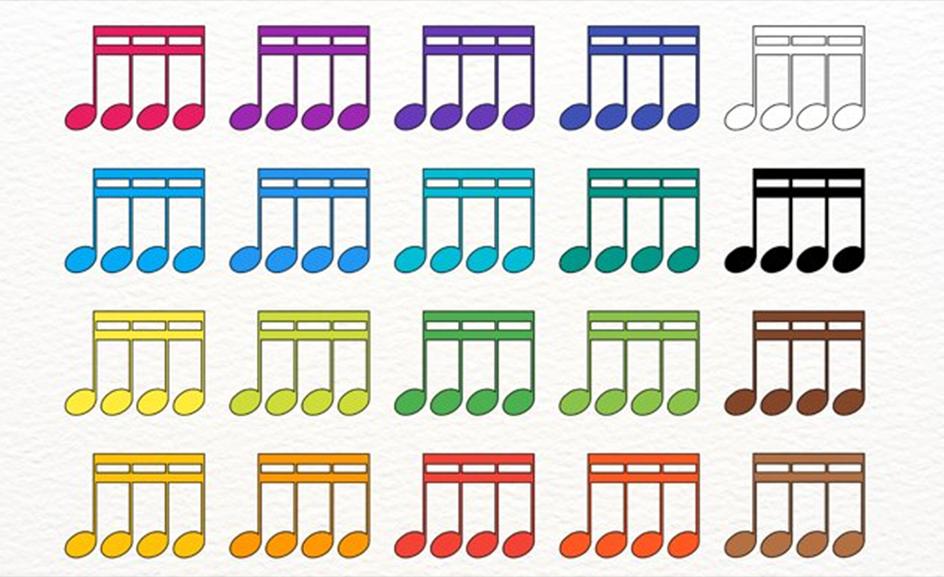Sound design in movie

In cinema (as George Lucas pointed out in the quote above), where sound plays a major role along with image and story. Don’t forget that the first sound film, The Jazz Singer, came out 90 years ago, in 1927, while the first game with sound, Pong, didn’t appear until 45 years later, in 1972. So today I want to share a few stories about outstanding sound design in films.
Rainbow Spring Slinky Helped Voice Robot Wall-E
Let’s start with an overview of film sound design. One of my favorite YouTube channels about cinema, Cinefix, has published a selection of 10 films with good sound design. On this list, they reviewed films such as Star Wars, Stalker, Gravity, and Wall-E.
I was particularly intrigued by the story of Ben Burtt, one of the pioneers of new film sounds, who came up with a name for his profession – sound designer. It happened in 1977, when he took on the role of voicing Star Wars. I will talk more about his work later, but for now I will only mention that at that time Ben did not have digital synthesizers, and therefore he created and recorded most of the sounds by hand! To create R2-D2’s voice, he went one step further and recorded his own voice and then converted it using an ARP 2600 analog synthesizer.
After working on six films from the stellar saga and 29 years of work on it, Ben decided that he no longer wanted to do voice acting for robots. But just a week later, Pixar convinced him to help them with the animated film Wall-E. It was a completely unique challenge: Wally’s “voice” was created from scratch, without the use of actors or real sources, and Wally did not utter a single word (all his emotions had to be conveyed only through artificially created sounds). At the same time, Valli was the real protagonist of the film with his own character. Thanks to the sound design, Ben really brought this character to life on screen. And it’s funny that when creating the sounds for Valli, he used the Slinky spring, which we used to play as children, running up the stairs.
The creation of sounds for the original Star Wars is detailed on Kaptain Kristian’s YouTube channel
In 1977, sound designer Ben Burt had a technical problem: science fiction sounds didn’t exist in the real world. For example, what sound to choose for a lightsaber beam?
Only 15% of the film’s final sound track was recorded on location during filming, the remaining 85% had to be created by Ben himself. The film contained many scenes that would have been incomprehensible without the appropriate sounds, especially battles in space. At the time, movie theaters didn’t even have stereo sound, let alone surround sound in the 70s.
Thanks to the skillful work of Ben, this task was brilliantly solved. He recorded the sounds of two oscillating movie projectors and a ray tube television cathode to create the sound of a lightsaber. This sound has become canon for the entire Star Wars saga and has become a symbol of science fiction. In the video itself, by the way, there is a lightsaber battle scene without added sound, which looks naive and funny. So without Ben’s input, Star Wars would have lost its epic vibe.
When creating sounds for Godzilla, it was decided to completely dispense with the use of the sounds of living animals: all sounds were specially created and recorded for the film.
The latest Godzilla movie is like a Lara Croft game: great sound, but the movie itself leaves a lot to be desired. This video interview by Michael Coleman with sound designers Eric Adahl and Ethan Van der Ryn focuses on sound in Godzilla.
A particularly interesting story is the voice acting of the original Japanese Godzilla in 1954. Sound designer Akira Ifukube traveled all over Japan recording many animal sounds, but none of them fit. In the end, to record the roar of the original Godzilla, he used the sound of leather gloves squeaking against the strings of a double bass!
The sound designers of the new Godzilla film are not revealing all their secrets, but the video shows how they voiced the kaiju in the film (I recommend paying attention to the excerpt from 1:50 to 3:50 approximately). Thus, the creaking of sneakers on the drum and the sound of crunching clothes hangers became the voice of the flying kaiju in the film. Just watch and listen to this.
Marvel’s current films definitely lack catchy musical composition
Tony Zhou, in his video essay, carefully analyzed the soundtracks of Marvel Studios films. Let’s do a little experiment: try to remember any tune from Star Wars. Feel free to even hum it out loud. I’m sure you can easily think of the imperial march or the resistance anthem. Now let’s move on to the second part of the experiment: try to remember any tune from the Marvel movies. It’s practically impossible, right? I also ran into the same difficulty (and I’ve watched all the movies, including “stupid” Thor). Maybe The Avengers has some impressive theme, but it’s not memorable.
Tony has an interesting theory about the reasons for this situation. Firstly, modern cinema strives to ensure that the music is inconspicuous and simply emphasizes the emotions on the screen. It certainly works, but it makes the movies monotonous and boring.
Secondly, this is due to the new trend of using temporary music (temp music) in the editing process. With the advent of digital editing technology, it has become easy to take an existing track and use it as temporary music for new material. Filmmakers are massively using sound effects from previous successful films as temporary music. They then ask the composers to write something very similar as an original soundtrack. Why is this happening? For example, a scene can be edited to music of a certain tempo with accents on certain moments, and without such a soundtrack, the scene may simply not work.
It’s hard to explain in words, but in the video, Tony gives specific examples of scenes from different films where the melodies are almost identical. I was especially surprised that my favorite movie of the decade, Mad Max: Fury Road, used the theme from Captain America: Civil War almost verbatim. But in “Mad Max” this theme became more memorable, because the composer Junkie XL made it more aggressive, dynamic and noticeable. In addition, the entire Mad Max soundtrack was purpose-built with rough and raw sounds, which makes it more memorable (and it’s great!).
Edgar Wright’s “Baby Driver” is one of my favorite movies this summer
In his video analysis of the film’s opening scene (I recommend watching it in its entirety), Thomas Flyte breaks it down bit by bit and explains why it’s so successful. Director Edgar Wright embodies many different techniques, but one of them is the basis of the entire film: the main character, Baby, makes an escape from police pursuit in his car, and each such escape is carefully coordinated with a specific song. Wright cuts this chase to the music of choice, resulting in the scene blending harmoniously with the musical accompaniment, reminiscent of the music video for the song. This technique makes music memorable and impressive. Wright consciously selects amazing tracks and incorporates them into the film on several levels.
The film “Dunkirk” had the most profound emotional impact on me this summer season
Christopher Nolan masterfully conveys the sense of threat and tension in Dunkirk. Every second creates the impression that the characters find themselves in an increasingly hopeless situation. In a review on the Vox channel, Christoph Haubursin explains how film sound contributes to this effect.
Composer Hans Zimmer uses two techniques to achieve this goal. Firstly, the sound of a ticking clock serves as the basis of the melody, which draws the viewer’s attention to the concept of time, which has become the main enemy for the military, locked on the Dunkirk beach. Secondly, Zimmer creates the illusion of an infinitely increasing musical tone, symbolizing the growing danger. The tonality of the music is constantly rising, as if the danger is rising higher and higher, without limit.
To create this illusion, Zimmer uses the Shepard effect. It combines three audio tracks with rising notes (each track an octave higher than the previous one). Gradually, the composer mutes the highest track and at the same time raises the volume of the lowest track. This creates the impression that the pitch of the melody is constantly rising, and this effect significantly affects the emotional perception. Previously, a similar technique was used by Shigeru Miyamoto in a Mario game to create the illusion of an endless staircase.









